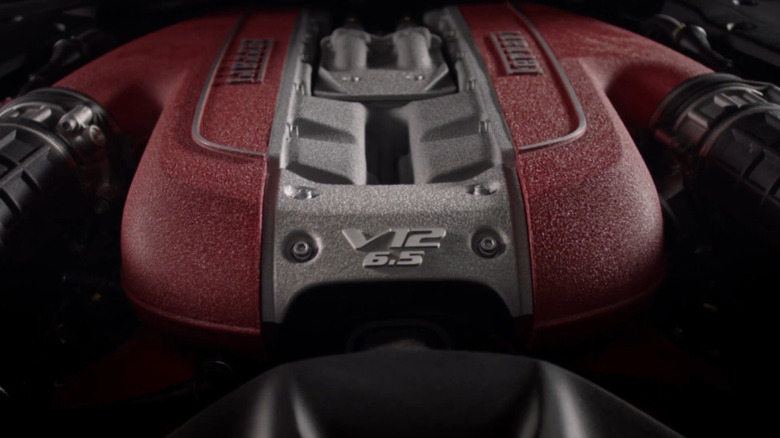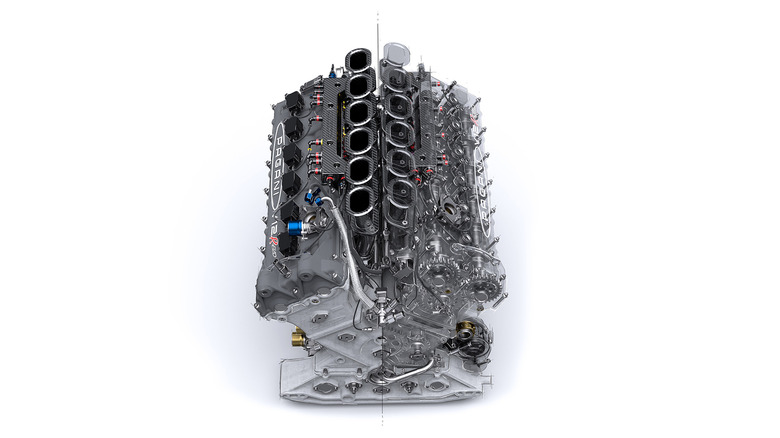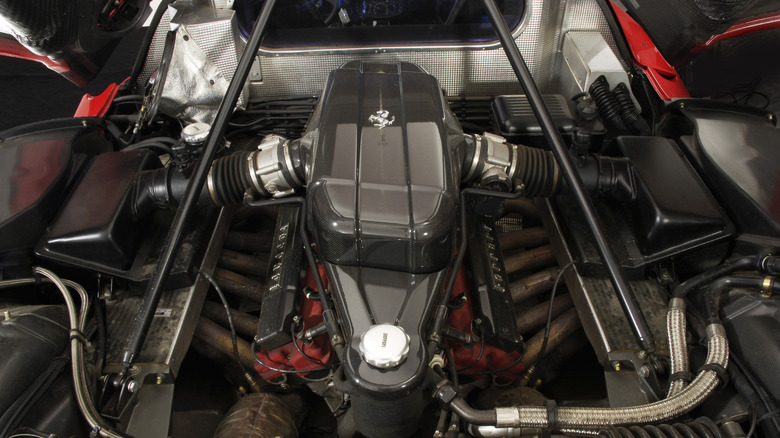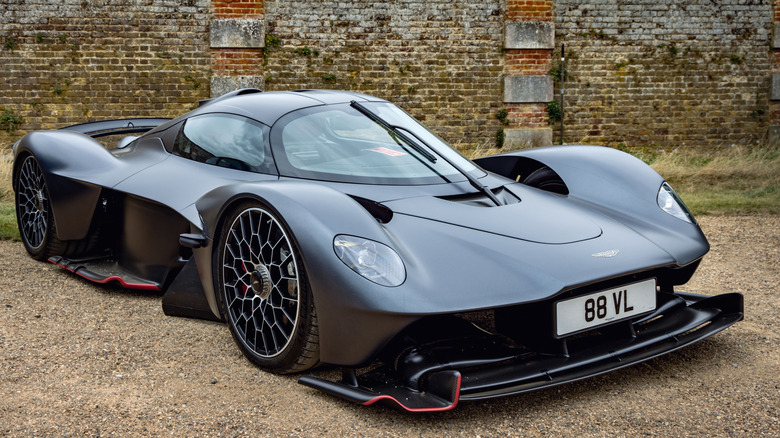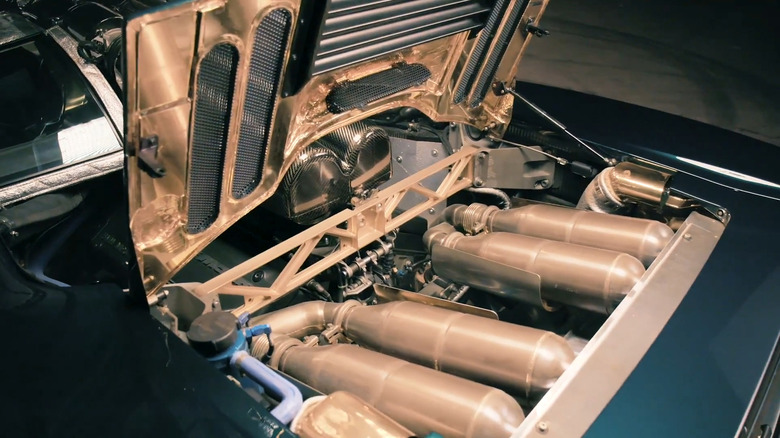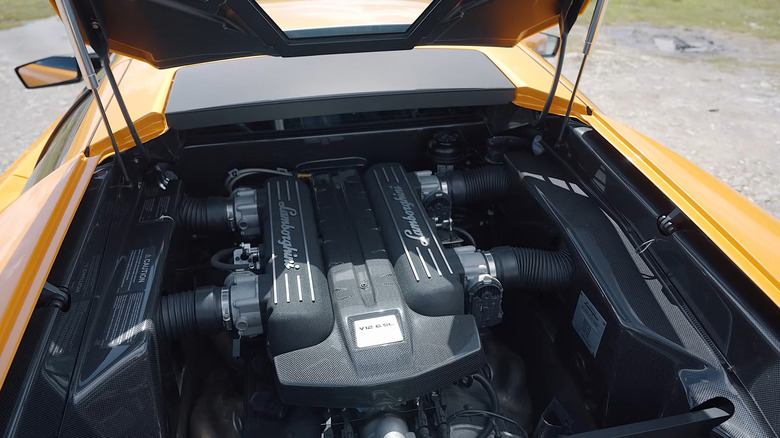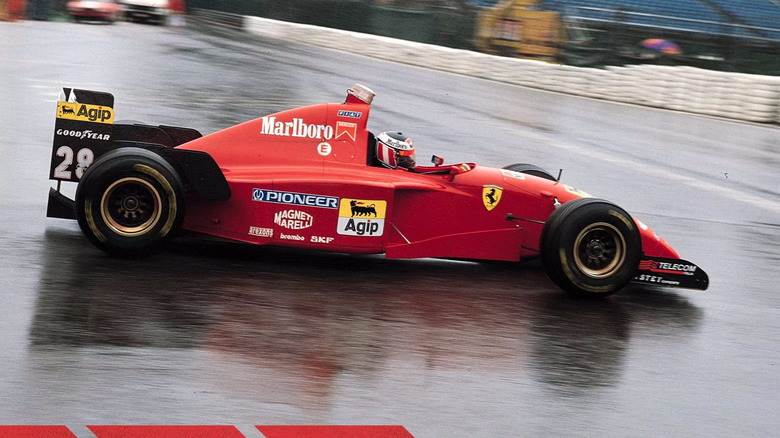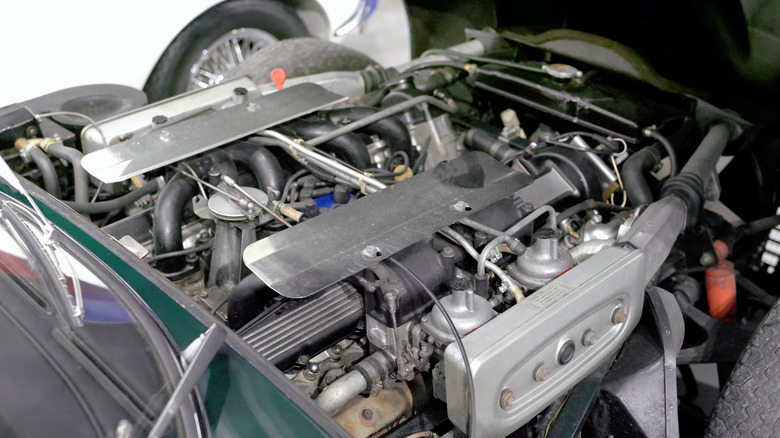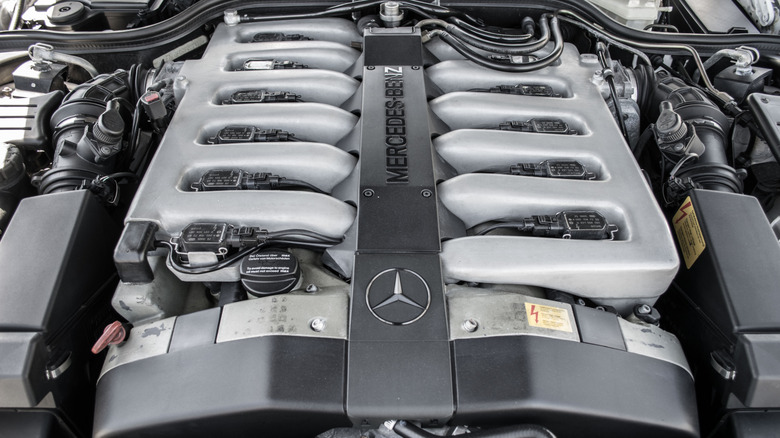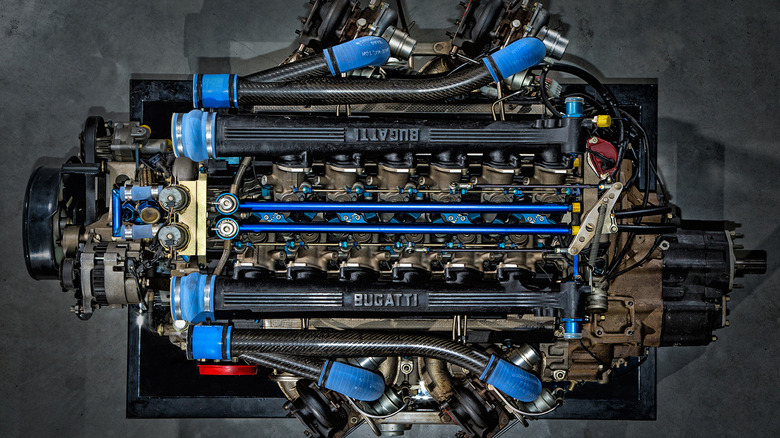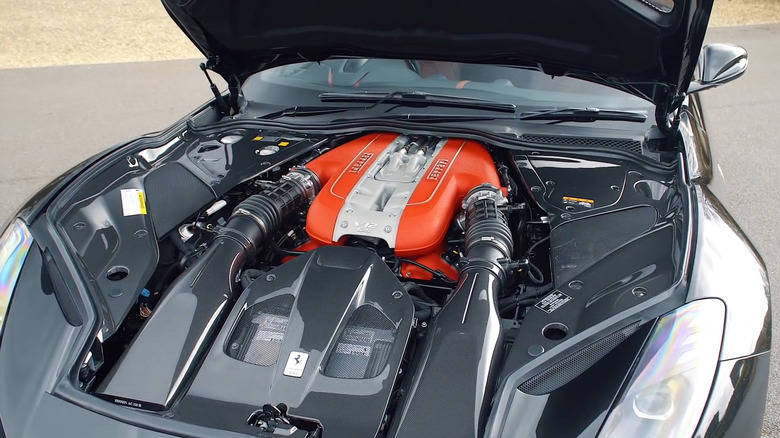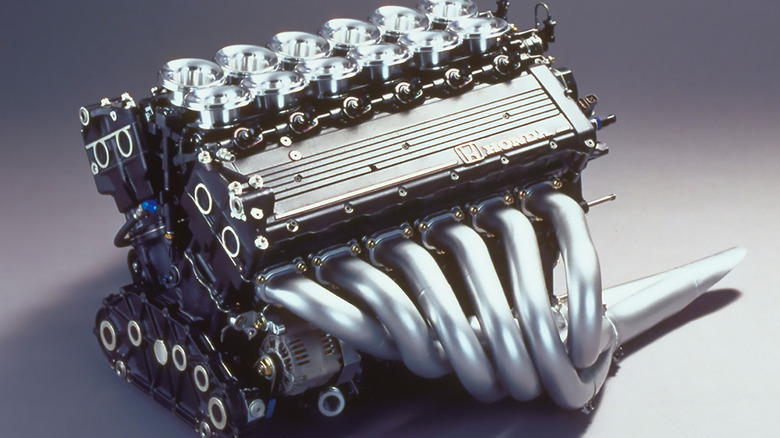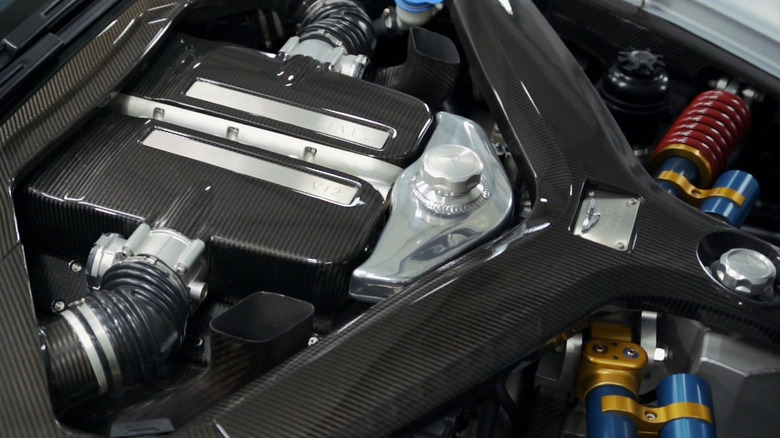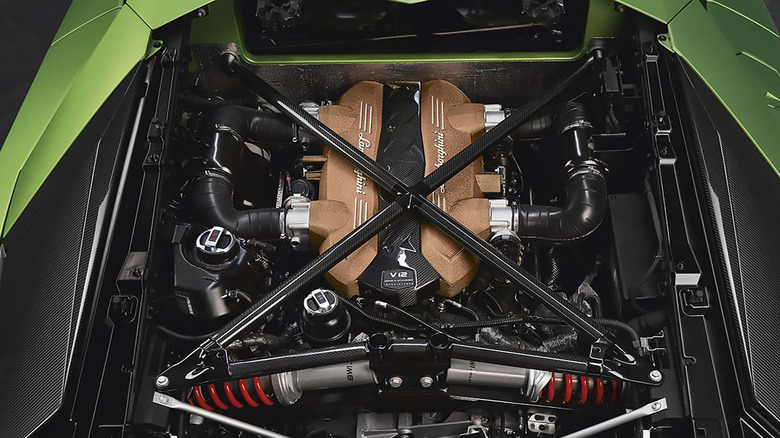13 Of The Best-Sounding V12 Engines Of All Time
Everyone has preferences on what engine type is the best, but the power and unmistakable sound produced by a V12 is something that all enthusiasts hold a soft spot for. Due to the size and power that you get from these engines, they aren't as common as the likes of the V6 or the V8, even more so in recent times, as various emission regulations make it tougher to justify production. Luckily, there's still an incredibly small selection of V12s in modern times, but going back through the decades unlocks a host of historical 12-cylinder engines that pushed the industry forward.
Some of the fastest cars in the world are powered by V12 engines, some of which are still featured in the record books despite having set records over 30 years ago. Speed is one thing, however, but so much of the V12's essence comes from the sound, something that manufacturers have delivered in various designs and configurations over the years. Whether it's on the road or around the world's best racetracks, these 13 engines are some of the best-sounding V12s ever produced.
Pagani-HWA AG 6.0L V12-R (2021-2024)
When Pagani unveiled the Huayra in 2011, fans of the Italian icon were eager to see whether the new hypercar could take up the reins of the Zonda, keeping the brand competitive with the likes of Ferrari, Bugatti, and Koenigsegg. It certainly had the looks that still drop jaws today alongside Pagani's latest models. But the Huayra also had to deliver on perhaps the most important aspect of these cars — the engine. Joining forces with Mercedes-AMG once again, the original Huayra used a 6.0L V12, which put any doubts to rest as to whether the Huayra was a fitting replacement for the Zonda.
Still, the very best of the Huayra didn't come with the original road car, instead coming in a car you can't drive on the road. Released in 2021, the track-only Huayra R came with an all-new, naturally aspirated 6.0L V12 engine, free from emissions restrictions. The result? A screaming V12 with a 9,000 RPM limit that rivals the sound of early '90s Formula One engines that feature further down this list.
Generating a staggering 2,204 pounds of downforce at 199 MPH, the Huayra R's purity carries throughout almost every second of a lap, making the most of its 850 horsepower and 553 pound-feet of torque output. For a slightly more deafening noise, Pagani improved the engine for the Huayra R EVO (the roadster version of the hypercar). This version was released in 2024, cementing this now 900-horsepower engine as one of the all-time greats.
Ferrari F140B 6.0L V12 (2002-2004)
The legend of all legends when it comes to Italian automotive history, Ferrari has pioneered every engine type it has put into one of its cars. Ferrari has given us revolutionary engines outside of the V12 with the V8s of the '60s and the high-tech V6s in modern cars, but when it comes to the most memorable of the 12-cylinders, the Enzo is tough to beat. Named after the founder himself, the Enzo deserved the best his company had to offer, and that's exactly what it got in the form of the F140B V12.
Angled at 65 degrees between the cylinder banks, the 2002 Enzo's naturally aspirated engine was designed to be as compact as it was powerful. The Enzo was rated at 660 horsepower — serious numbers at the start of the century. Striking a perfect balance between a high-revving scream and a more understated growl at lower speeds, the first F140 engine constantly reminded you what sort of car you were driving. The Maserati MC12 used the same powertrain, albeit slightly detuned, and the F140B engine's philosophy still features in the latest V12 Ferrari models.
Aston Martin-Cosworth 6.5L V12 (2021-2024)
Turning to the pinnacle of British automotive heritage, Aston Martin has managed to retain its presence on the international stage to an extent few can match. While luxury is a fundamental part of the brand's image, performance has never gone by the wayside. Aston Martin is also no stranger to using a V12 to power its cars, with staple nameplates such as the DBS, V12 Vantage, and the One-77 all reaping the benefits. However, no V12-powered Aston Martin had the opportunity to showcase the true capabilities of its powertrain like the groundbreaking Valkyrie.
Designed by legendary F1 designer Adrian Newey, the Valkyrie's incredibly lightweight shell houses a naturally aspirated 65-degree, 6.5-liter V12 engine designed in collaboration with Cosworth. Without any turbochargers or superchargers, the Valkryie's engine is free to reach the 11,000 rev limit as authentically as possible. Not long after, Aston Martin unveiled the Valkyrie AMR Pro— the first step towards the British brand competing in the WEC Hypercar class with the Valkyrie. For this track-only model, the hybrid system in the road car was removed for weight reduction, but it still produces a thunderous 1,000 horsepower.
For the latest WEC version of the car, known as the LMH (or LM for the customer version), the engine has been modified to comply with regulations. Still, the unmistakable roar of the V12 remains, already giving the racecar a reputation on track during its first season at the top of endurance racing.
BMW S70/2 6.1L V12 (1993-1998)
We mentioned that only a few British automakers have as much, if not more, presence in the performance side of the industry as Aston Martin, and McLaren is one of them. The name McLaren was first used for Bruce McLaren's racing team in 1963, seeing tremendous success across various motorsport disciplines before venturing out into manufacturing cars for the road. As a racing team, it's no surprise that McLaren's first road car, the F1, was the fastest car ever built at the time, largely thanks to the engine positioned in the middle of the car.
Deciding not to produce the engine itself, McLaren turned to BMW's motorsport division to create the perfect powertrain for Gordon Murray's design. Purpose-built by BMW for the McLaren F1, the supercar features a 6.1L V12 producing over 620 horsepower and 480 pound-feet of torque with the codename S70/2. It was also naturally aspirated, allowing it to power to 7,500 RPM unassisted. Despite the lack of boost from any turbo, the McLaren F1 set a new record with a top speed of 240.1 MPH, a mark that only a few have bested since. It doesn't have the same high-pitched scream as a Ferrari or Lamborghini V12, but its deeper, gutsy sound is just as hair-raising.
Lamborghini 6.5L V12 (Murciélago SV, 2009-2010)
It's not uncommon for Lamborghini to keep its nameplates in production for quite some time, similar to many of the brands that produce supercars exclusively. Born out of conflict with Ferrari, Lamborghini has numerous iconic performance cars under its banner, with the first-ever Lamborghini, the 350 GT, utilizing a Bizzarini V12. In more recent times, the Murciélago ushered in a new era for Lamborghini after Audi took ownership, with production running from 2001 to 2010.
Until 2006, the Murciélago was powered by a 6.2L V12, which was mighty impressive in its own right. But in 2007, this engine was dropped for a more potent 6.5L engine, which would become the base of the final edition of the model. Angled at 60 degrees to run as smoothly as possible, the 2009 Murciélago SV's power output was 670 horsepower (30 horsepower more than the standard model) and 487 pound-feet of torque. A new exhaust also came with it to help reduce weight, amplifying the exotic, naturally aspirated howl that no other V12 has quite managed to match.
Ferrari 412 T2 Tipo 044/1 V12 (1995)
Ever since its inception, Formula 1 has been the pinnacle of automotive innovation, with manufacturers endlessly discovering new methods to extract the most performance out of their engines. Each era of the sport has come and continues to come with a tight set of regulations. However, in the late '80s and into the early '90s, teams were able to use different engine types as long as they were in line with that year's regulations. In 1995, the rules changed so that the engine displacement fell from 3.5L to 3.0L, meaning Ferrari had to decrease the size of the 1994 412 T1 engine. The result turned out to be one of the greatest sounds Formula 1 has ever heard.
Named the Ferrari 412 T2, codenamed the Tipo 044/1, this was the last Ferrari V12 used in F1 before switching to a V10. In order to maximize acceleration and reach top speed as fast as possible, F1 engines can rev incredibly high, with this specific V12 engine able to make 690 horsepower at 16,800 RPM . A DOHC engine with four valves per cylinder, this specific car was driven by Gerhard Berger and Jean Alesi, who finished 5th and 6th in the driver's championship.
Jaguar E-Type Series 3 5.3L V12 (1971-1974)
Very few sports cars come with as much elegance as the Jaguar E-Type. First released way back in 1961, this Jaguar has become one of the most iconic pieces of British automotive history and is incredibly sought after in its original form. With a design style so stunning that Enzo Ferrari named it one of his personal favorites, the engines that powered the E-Type also shouldn't be ignored, particularly what you got with the Series 3 model, which was unveiled in 1971.
The Series 1 E-Type featured the 3.8L six-cylinder XK engine that also holds a special place in the brand's history, but the Series 3 took on a 5.3L V12 that was originally penciled in for the XJ13 racecar that never actually made it into production. Jaguar took the core foundations of this powertrain and used it for the E-Type to transform it into a proper GT car, producing 272 horsepower and 304 pound-feet of torque. You don't get a high-pitch sound like the modern engines on this list. Instead, the E-Type Series 3 offers a deeper, somewhat refined rumble that starts to open up as the revs climb higher. This would also be the last E-Type that Jaguar ever built.
Mercedes-Benz M120 V12 (1991-2024)
BMW and Mercedes-Benz are two of the most established and respected automakers in the world, to a level that neither may have achieved if it weren't for the immense competition between the two. After seeing the success that BMW found with its V12s, Mercedes-Benz decided to join the trend in 1991 with its own, named the M120. One of the most versatile engines in the brand's history, the iterations of the M120 defined the 1990s for Mercedes-Benz.
The first model to receive this 6.0L V12 engine was the 1991 600 SE/SEL (also referred to as the W140). Producing 402 horsepower and 428 pound-feet of torque, these full-size luxury sedans had all the power to match their size. The M120 engine would also be used for the 1993 600 SL, seeing a reduction in power to 389 horsepower. Still, the exhaust carried over the relatively understated, deep tone but added some volume when you put your foot down.
While the M120's usage in Mercedes-Benz's in-house models allowed the brand to compete with BMW, its most famous and iconic application came with the 1999 Pagani Zonda, where the original model used a base 6.0L engine but modified it to achieve the classic Italian roar. Later versions of the Zonda used large M120 engines, specifically a 7.0L and a 7.3L variant, with the power continuing to increase to a whopping 789 horsepower in the HP Barchetta model.
Bugatti 3.5L V12 (EB110, 1991-1995)
In recent years, Bugatti has become synonymous with the 16-cylinder engine. With each new car aimed at being one of, if not the fastest in the world, the French automaker has offered tremendous amounts of power, with the Veyron and Chiron utilizing a W16 engine, and most recently, the Tourbillon being powered by a V16. However, when the brand was under the ownership of Romano Artioli, the last model was produced under Bugatti S.p.A was the legendary EB110, named 'the first modern super sports car' by the brand.
Before Volkswagen took over the brand and started to use the two V8s strapped together at a 90-degree angle, the 1991 EB110 put a 3.5L V12 to great use, with some models producing 560 horsepower and others 610 horsepower. While many engines on this list are naturally aspirated, the bespoke engine for this Bugatti icon is equipped with four turbochargers, which not only bolster its performance but help achieve the low-tone, throaty sound that's unlike any other V12 from its time. You could push the EB110 to 8,250 RPM, helping it achieve its record-breaking top speed of 218 MPH.
Ferrari F140 6.5L V12 (2017-2025)
After the Enzo introduced the F140 engine back in 2002, subsequent models have featured a variation of the engine design under the hood. This includes the LaFerrari and F12, but the engine introduced in 2017 for the 812 Superfast proves that Ferrari still has all the tools to produce a startling, beautiful engine that blows most other V12s out of the water. Coming with a larger 6.5L engine, Ferrari managed to make it the most powerful, naturally aspirated Ferrari at the time.
Revving all the way up to 8,500 RPM to use its 789-horsepower output, the F140GA 65-degree V12 engine made the 812 another supercar to offer Ferrari's iconic screeching yet refined sound to the public. Later, the 812 Competizione pushed the V12 even further with a 9,500 RPM limit and a maximum output of 819 horsepower. But, of course, that wasn't enough for Maranello. In 2023, the limited SP3 Daytona was released with even more performance at 829 horsepower. With the 812 nameplate now discontinued, the 12Cilindri has taken its place, utilizing the same engine as the Competizione, albeit with some heavy modifications. Sadly, it's set to be the last to feature a naturally aspirated V12 from the Prancing Horse.
Honda RA121E V12 (1991)
Ferrari wasn't the only manufacturer that used a variety of different engines throughout the late '80s into the early '90s when the regulations left more breathing room than today. Similarly to the F1 road car, McLaren didn't make its engines for its Formula One cars. Instead, it partnered with Honda, going on one of the most iconic and successful runs in the sport's history. In 1991, Honda made the switch to a V12 from a V10, which subsequently led to this engine being the last V12 to win the world championship.
Not just any world championship — it was the last title won by the great Ayrton Senna. While the Ferrari V12s came with an unmistakable scream, Honda's version of the 12-cylinder had much more grunt to it, remaining at a slightly deeper, gutsy note compared to what its Italian competitors were able to achieve. It also couldn't rev quite as high with a limit of 13,000 RPM. Power came in at more than 650 horsepower, allowing Senna to win seven out of the 12 races that year, with teammate Gerhard Berger picking up a single additional win in Japan.
Aston Martin-Cosworth 7.3L V12 (One-77, 2009-2012)
The Valkyrie may be the most recent collaboration between Aston Martin and Cosworth, but it wasn't the only time the two joined forces to create one of the most memorable V12 engines in recent times. Back in 2009, the British automaker unveiled the One-77 supercar, which only saw 77 units built with an approximate $1.6 million price tag. Aside from looking the part, its engine stole the show, becoming the fastest Aston Martin ever built at the time.
Under the hood of the One-77 was an all-new 7.3L V12, good enough to produce 750 horsepower. Aston Martin also introduced the V12 Vantage the same year as the One-77, and while that sounds pretty special itself, the latter's larger engine is one of the meanest-sounding British supercars ever made. It's not so loud that it becomes obnoxious, but it still offers a deep, soulful soundtrack, particularly as you approach its 7,500 RPM redline and top speed of 220 MPH.
Lamborghini 6.5L V12 (2011-2022)
Moving into the next generation of supercars for Lamborghini after the Murciélago was discontinued, it wasn't much of a surprise to see the Italian outfit retain a 60-degree mounted 6.5L V12 for the all-new Aventador. Despite having the same displacement as the outgoing model, the Aventador's powerplant was brand new, producing a massive 691 horsepower. Again, it was naturally aspirated, allowing it to supply power and speed unassisted. The noise was also equally memorable, even though it sounded a little different from its older sibling.
The base Avendator's engine made a name for itself, aside from its performance, by continuing the raw, excellent noise that the Murciélago produced. However, it came with a deeper tone, which still screamed more than most, a trait amplified in the 2015 SV. With 750 horsepower, the rev limiter went up to 8,500 RPM from 8,250, giving the V12 engine a little more time to reach a higher pitch. Widely regarded as the ultimate Aventador, the SVJ increased the power slightly to 770 horsepower and became one of the fastest production cars to ever lap the Nürburgring Nordschleife, with the iconic engine echoing around the track for a run of 6 minutes and 45 seconds.
